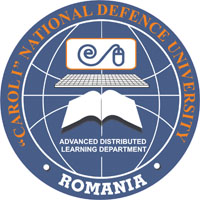PREPARING FOR GEOINFORMATION SOCIETY
PREPARING FOR GEOINFORMATION SOCIETY
Author(s): Maria VIŞAN, Cristina Niculescu, Angela IonițăSubject(s): Education
Published by: Carol I National Defence University Publishing House
Keywords: geo(spatial) information; Spatially Enabled Society and Government; Geospatial Information Technology; geoknowledge models; geospatial semantics and interoperability
Summary/Abstract: Switching to Spatially Enabled Society and Government or Geoinformation Society and Government is irreversible, and affects all aspects of society and interrelationships between stakeholders and partners, institutions and citizens being in different hypostasis: from researchers, professionals for every citizen. In this framework must be recognized that all activities and events have a geographically and temporally feature, and use geospatial data, information and services efficiently and effectively in decision making and organizing businesses. In the Geoinformation Society there is a continuous and intensive demand for widely available capabilities to use open material, coming from heterogeneous sources, for processing, analysing and sharing it, especially in an interdisciplinary approach. Relevant tools need to be freely and openly available and the related infrastructure - after all tools need somewhere to run, and data needs somewhere to be stored - should be capable of effective deployment by distributed communities. And, which is most important, there is a strong need for understanding the content of the open materials accessed or resulted from the processing and analyzing in order to create the sharing premises by different communities of professionals. Using the potential of geoinformation technologies can create new service markets; may facilitate the provision of services by the private sector rather than the public sector, including a new partnership between academia and the private and public sectors; can accelerate administrative decision-making procedures; may consolidate the current research and open new perspectives for research. But first of all, must be recognized the change in education in terms of at least two aspects: teaching/learning about geospatial information and teaching/learning geospatial information technologies and the associate challenges. The purpose of this paper is to discuss the change in education under influences of characteristics of Spatially Enabled Society and Government, spatial thinking, presentation of issues related to training versus learning, some geospatial knowledge models and tools and educational resources in order to build the premises for creating well-educated citizens in Spatially Enabled Society and Government. A few use cases using applications based on Intergraph Co. technologies have been selected.
Journal: Conference proceedings of »eLearning and Software for Education« (eLSE)
- Issue Year: 11/2015
- Issue No: 01
- Page Range: 327-334
- Page Count: 8

